Taking Measure
Just a Standard Blog
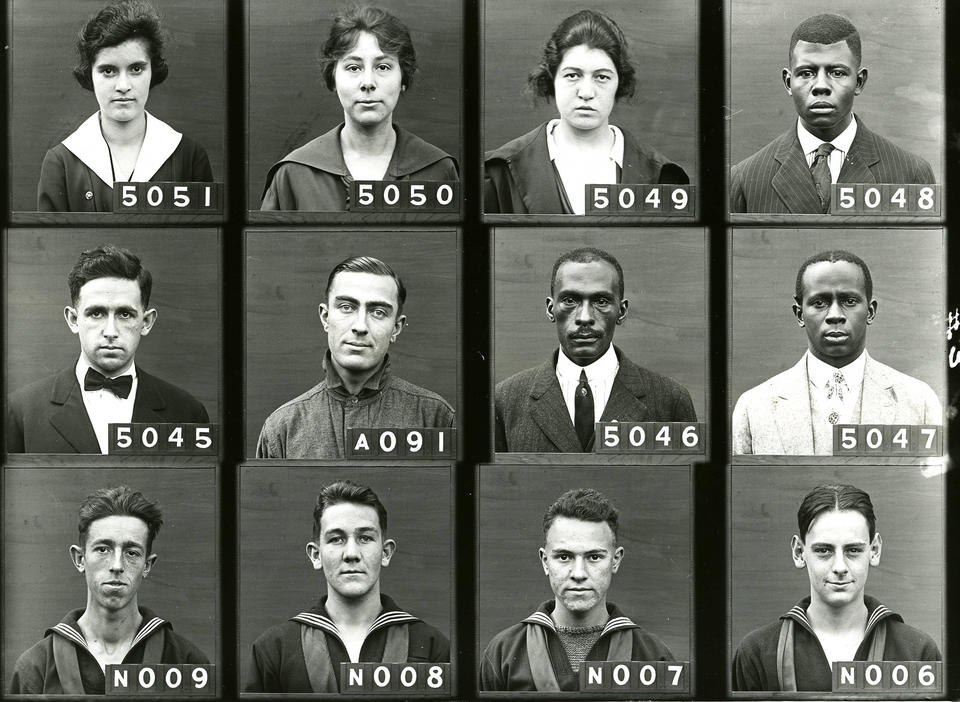
1918 NIST staff photos. The numbers indicate the area in which the employee worked. Numbers beginning with “5” tell us these were employees of the Chemistry Laboratory. An “A” or “N” denote Army or Navy servicemen assigned to NIST.
One of my work-from-home projects was getting to know the staff of the National Institute of Standards and Technology (NIST, then called the National Bureau of Standards, or NBS) in 1918. Quite an interesting bunch. Among them was a chemist turned pandemic poet; one of the earliest known Asian American women to work at NIST; a Black man thwarted in a legal career who nevertheless participated in a civil rights case decided by a presidential committee; a pair of brothers from Puerto Rico whose accomplishments would stretch from World War I to the Cold War; and a laboratory assistant who became an impresario of gay-friendly nightlife in Washington, D.C.
The NIST archives has a collection of staff photographs from 1918. This was the first time all staff were photographed for identification purposes, due to security needs during World War I. These photos are historically important because they include not only well-known scientists but also rank-and-file staff members. And the photographs were taken during a time when the NIST workforce was diversifying to meet the demands of the war.
The staff members in these photos were identified by initials and last names only. My work-from-home project was to fill in their complete names to facilitate further historical research. This was not as straightforward as it sounds. No known listing of their full names existed. Identifying these individuals took a great deal of research using census records, old city directories and newspaper stories, and other historical documents. I was using the tools and techniques of a genealogist to learn more about our staff predecessors.
This research turned up their full names as well as information about their lives. And like any good genealogy, many of the details were quite unexpected. Let me introduce you to some of these fascinating NIST employees from 1918.
The pandemic poet
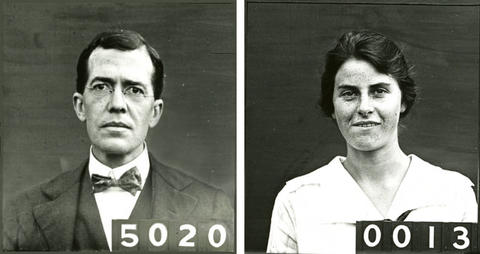
1918 might seem like ancient history to some, but in one way that year is quite relatable to today. Before COVID-19, the last major pandemic to affect the United States was the 1918 influenza pandemic, which killed millions of people worldwide, and more than 500,000 in the United States. Masks, sanitization and social distancing became the norm for the 1918 NIST staff, just like it is now for us. These everyday efforts to fight a deadly disease inspired NIST chemist Campbell E. Waters to pen a poem he titled “Rules for Influenza.” This poem would likely have been lost if it weren't for office clerk Lois Crump, who included it in a letter to her fiancé serving as a soldier overseas. Their correspondence was later published as a book: The Great War at Home and Abroad: The World War I Diaries and Letters of W. Stull Holt.
Here is the poem:
Rules for Influenza *
Oh, shun the common drinking cup,
void the kiss and hug,
For in them all there lurks that [scourge],
The influenza bug.
Cough not, nor sneeze when in a crowd;
‘Tis neither kind nor neat,
Because it scatters germs around.
So try to be discreet.
Lick not the thumb in turning o’er,
The papers in your file,
And wear your health mask, though you look
Like time. Forget it. Smile.
Remember doorknobs harbor germs,
So wash before you eat.
Avoid the flying clouds of dust
While walking on the street.
Most anything you do — or don’t —
Is apt to cause disease,
So don’t do anything you do
Without precautions, please.
Elizabeth Yung-Kwai
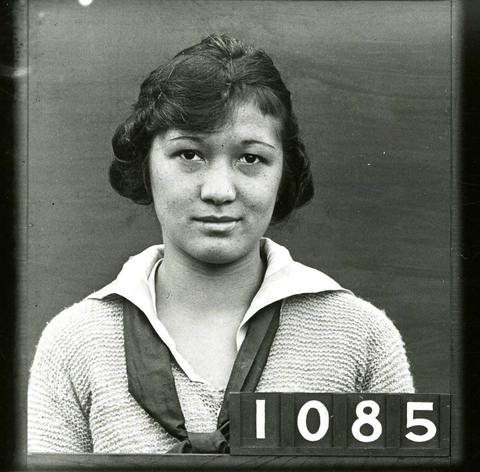
One of the earliest known Asian American women to work at NIST, Elizabeth Yung-Kwai was the daughter of a Chinese American diplomatic family. The Wellesley College student worked in the Electricity Laboratory investigating self-luminous materials used by the military in aircraft instruments, compasses, watches and gunsights. She co-authored a paper, “Studies of Radium Luminous Materials,” that was presented at the April 1919 meeting of the American Physical Society. After raising a family during the 1920s and 1930s, she would return to government service during World War II as a member of the Women's Army Corps.
Frank Davenport Calmore

Frank Davenport Calmore was a clerk in the NIST instrument shops while attending the Howard University School of Law. Although he completed his law degree, he would spend the next several decades working as a train steward in Texas. Seemingly prevented from starting a legal career, he nevertheless used his legal training on several occasions to advocate for fair employment for Black Americans in the railroad industry.
Most notably he was a plaintiff in a 1943 discrimination case brought before President Franklin Roosevelt’s Committee on Fair Employment Practice. During World War II, President Roosevelt issued an executive order banning discriminatory employment practices by federal agencies, unions and companies involved in war-related work. The Committee on Fair Employment Practice was set up to enforce the provisions of the order. Calmore successfully testified before this committee against a railroad company that had replaced its Black dining car stewards with less experienced white employees. The committee ordered the railroad to stop its discriminatory practices.
In the 1950s Calmore became chairman of the San Antonio, Texas, chapter of the NAACP's legal-redress committee, which fought to integrate city schools, swimming pools and parks.
Los hermanos Cordero
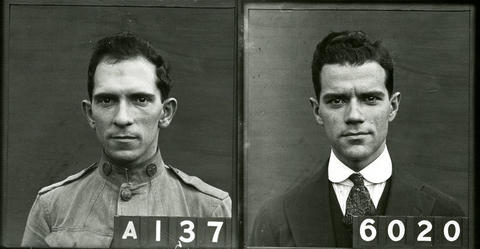
Brothers Fidel and Manrique Cordero moved as teenagers from their hometown of Maricao, Puerto Rico, to Buffalo, New York, where Fidel became a watchmaker and Manrique worked for the Pierce-Arrow Motor Car Co. After Fidel joined the Army in 1917 and was assigned to NIST to conduct aeronautical research, Manrique soon followed him to Washington and was employed at NIST as an instrument maker.
When the war ended, Manrique transferred to the United States Coast and Geodetic Survey, but Fidel remained at NIST for the next 40 years, designing measurement instruments for aircraft, including altimeters, anemometers, cabin pressure indicators, a sky compass, a stick-force indicator, oxygen flow regulators, and vibration and yaw meters. He also designed an aneroid for radiosondes, a micromanometer for use on mass spectrometers, and a water- and shock-proof compass for the Navy. At the end of his career, he was part of a team honored with the 1959 Department of Commerce Exceptional Service Award for its contributions to the development of infrasonic microphones to detect atomic bomb tests during the Cold War.
The Krazy Kat Klub
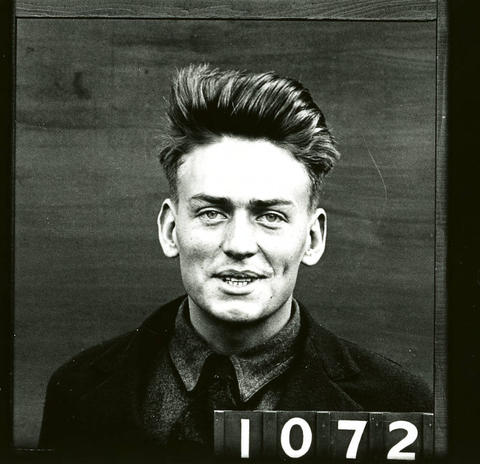
Cleon F. Throckmorton worked as a laboratory assistant for electrical research while studying at George Washington University. In 1919 he opened the Krazy Kat Klub in Washington, D.C., a speakeasy that openly welcomed a gay clientele. The club took its name from a popular comic-strip character of the period, who was notably androgynous. Throckmorton’s club became a nightlife hot spot for the city, and a popular gathering place for D.C.’s gay community, before closing in the late 1920s.
Throckmorton relocated to New York and became a prominent set designer for the theater, including for playwright Eugene O'Neill, who won the Nobel Prize in literature in 1936. Throckmorton’s work was in such demand in the 1920s and 1930s that, according to theater historian Richard Somerset-Ward, his name appeared on more Broadway playbills than anyone except the New York City fire commissioner (who was listed as an official endorsement of theaters’ fire safety). By the 1950s Throckmorton was creating sets for early television productions. He was inducted posthumously into the Theater Hall of Fame in 2002.

You can help
Are you a genealogy buff who likes a challenge? We have not been able to identify the full names of every individual in the 1918 staff photos and could use your help. Finding their unabbreviated first names enables further historical research about them, and makes their photos more easily findable by other historians and genealogists. You can review the entire 1918 staff collection on the NIST Digital Archives to see which names we still need. There we have also included two NIST staff directories from 1918 that list employees' home addresses for that year (but unfortunately not their full names). The addresses are another piece of information helpful in verifying their identities. Following are a few examples to get you started.
Many of the women working in the NIST labs during World War I were university students or professors. These two women appear to be older than students, but their complete names remain a mystery.
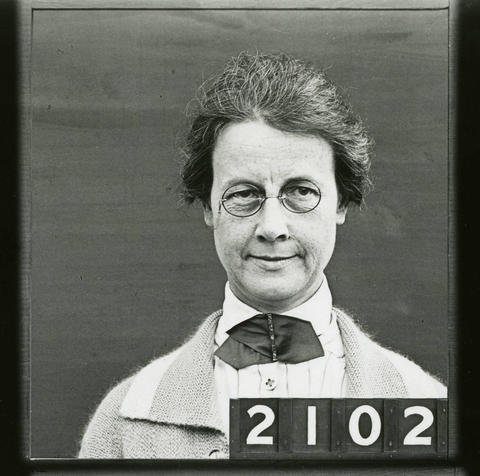
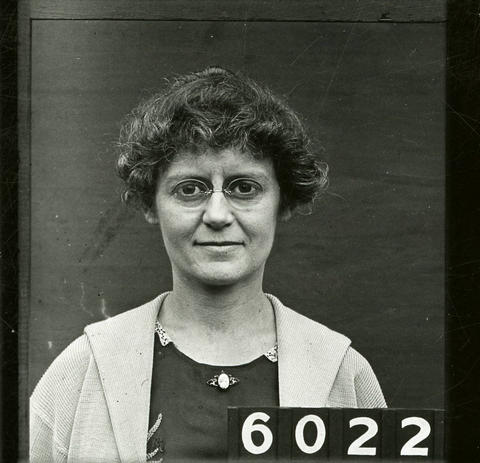
The name of every Black employee from 1918 has been identified, except for this man:
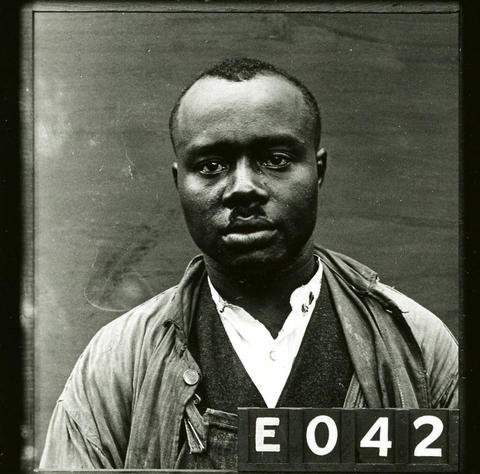
Many of the still-unidentified staff were members of the military. Service in the military produces a lot of recorded information, and the fellow below has a unique last name. Anyone up for this challenge?

The following two men also have uncommon last names, but we still need to find their first names:
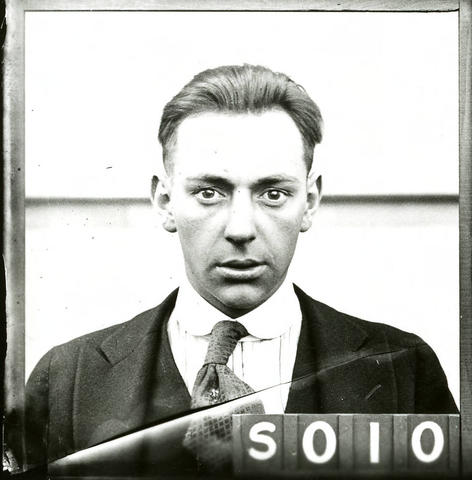
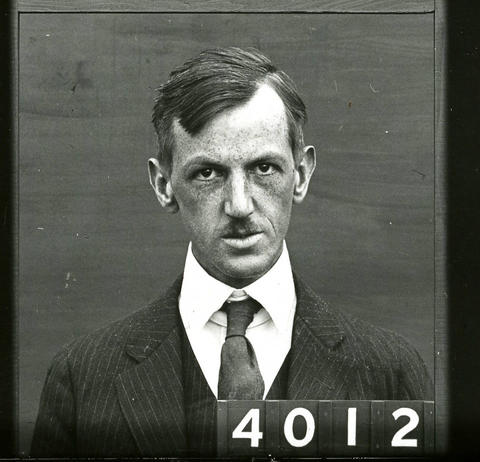
Share your findings and evidence in the comments section below.
*Poem has been lightly edited for this article.
About the author
Comments
For A.A. Erbacher, try Anna A. Erbacher, born 26 April 1875 in Kansas. Her passport application, with photograph, is available on Ancestry.
Thanks Sharon. I took a look at Anna A. but from her passport photo she doesn't appear to be our Erbacher, and Anna A. doesn't seem to have lived in Washington, DC. It's a good start but we'll need more evidence to settle this one. I appreciate your efforts!
The Nov 25, 2918 Washington Post had Miss Anna Erbacher as a visitor from Washington staying at the McAlpin Hotel in New York.
Did you look at the photo that on p.206 of the reel of passport applications (back side of the application)? It looks like her. Also, I found a newspaper article placing Anna Erbacher in the District of Columbia in 1918.
Thank you for the additional information. You are correct, that photo is certainly her. I was looking at the wrong image. And with your additional find that she was in DC at the right time that confirms it. I've updated her name in our Digital Archives collection. Keep up the good work! This is incredibly helpful!
If it helps provide context at all, I noticed that her address on Upton Street was actually the address of a school called the Academy of the Holy Cross. (Now in Kensington, apparently.)
Interesting! That was directly across the street (Connecticut Ave) from the Bureau of Standards campus at the time. I wonder if she had been an instructor at the school, or perhaps just boarding there during the war.
W.L. Wilson is likely Wilbur Louis Wilson, whose WWI draft registration shows him living at 1631 C Street SE. The quadrant is wrong but that seems like a pretty big coincidence.
Hi Jennifer. I agree that is too much of a coincidence with the address and that this is him. I have updated our digital archives record with his full name. Thank you for tracking him down!
L.R. Sovring is LeRoy Sovring. I found an article on newspapers.com stating he played right field for the Commerce team; also his WWI draft card on Ancestry. I emailed both to the author.
Thanks Marian! The info you sent me confirmed he is Le Roy Ivan Sovring and he worked at the Bureau of Standards. Your questions about L. J. Imeker also helped us figure out that his last name might actually be Tucker. But we still need help to determine his full name and confirm his connection to the Army and the Bureau of Standards.
LJ Imeker is listed as LJ Tucker here https://nistdigitalarchives.contentdm.oclc.org/digital/collection/p1600…
His top right button looks to be the Quarter Master Corps insignia shown here http://freepages.rootsweb.com/~gregkrenzelok/genealogy/veterinary%20cor…
P. G. Saper (set 14) sure looks like Paul Gerson Saper (1897 - 1978), B.A. with Honors in Physics from Rice University in 1918; his yearbook photo is on Ancestry. As a student, he was an Assistant in the Physics Department 1916 - 1917, and again in 1917 - 1918. "Mathematically, a phenomenon: said to be almost a second Sidis," reads his yearbook bio. By 1939 he had an M.S. and Ph.D. from University of Chicago where he was connected somehow to the Ryerson Physical Lab. In 1940 and 1942 he was a public school teacher. But I can't find a DC connection during WWI.
Thank you for looking into the larger collection of photos. I agree that the yearbook photo you found appears to be him. There were also some Texas city directories from the WWI period that list a P.G. Saper as being in the military. Because he has a somewhat unique name, a science background, was in the military, and with the photo I think its safe to assume Paul Gerson Saper is our guy. I have added his name to the photo. Great find!
At the University of Chicago, the "Ryerson Physical Lab" was the name of the building that housed the Physics Department until 1985. https://physics.uchicago.edu/about/our-history/ryerson-laboratory/
Also, A. L. Bearmore (set 40) could be Alvan Lawrence Bearmore (1890 - 1962), listed as "Designing Engineer" in the 1920 East Orange, NJ census. He worked for Bethlehem Steel Co. for over 20 years, according to a 30 April 1961 article in the Asbury Park Press, which includes a photo that could be A. L. Bearmore, allowing for 40+ years of aging. According to his WWI Draft Registration card, he was working for Turner Construction on Madison Ave, NYC in 1917. He is sometimes called a "mechanical engineer" (1925 East Orange City Directory) and even an architect (1920 East Orange City Directory). But, again, I don't see any military or DC connection
Only the folks with an 'A' or 'N' number were military. Bearmore's 'C' designation indicates he was on the custodial staff. His WWI draft card notes he was blond. He doesn't look blond in our photo. But then the WWII draft says he had brown hair. I don't have access to the NJ newspaper photo you mention. This might be him, but I think in this case we'll need a bit more evidence. Its definitely a possibility!
BTW, in a future update, can you talk about why the NIST workforce was so diverse in 1918? I am really surprised at the number of women and people of color. Thanks for sharing this fascinating project!
Workforce shortages during the war coupled with an increased need for scientific research to aid the war effort led the Bureau of Standards to diversify its staff. Thanks for helping with this history project!
Thank you for providing this— I stumbled upon your site while looking up info about my great grandparents family. My great grandma Beth Suverkrop (Yung Kwai) was an amazing woman. I think a little bit of her tenacity has spread to all her children, grandchildren and great grand children.
Thanks for your comments Heather. Working on this project took a lot of time, but I knew it would be worthwhile because someone would care about these individuals from so long ago. It honestly gives me great satisfaction to know we were able to connect you with your great grandparent and share her story. For this alone I consider the effort a success. Are there any stories in your family about your great grandmother's work at the Bureau of Standards or during WWI in general?



Great read! Very fascinating story about some of the past NBS/NIST employees. Love the photos!